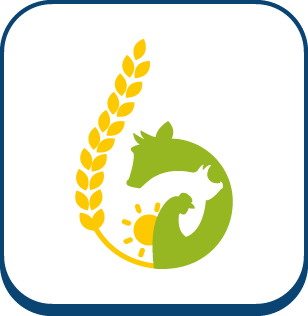Documentations
Economic incidence of high prolificacy in pig commercial herds: comparison of 13 scenarios
Over the past ten years, the important increase of sow prolificacy leaded the pig producers to adapt the herd management method in order to breed additional pigs. As the litter…
Publié en 2004Influence of individual birth weight and litter size on survival rate, postnatal growth, slaughter performance and meat quality in pigs
Survival rate, growth performance, and carcass and muscle characteristics at slaughter were studied on 1 289 piglets, according to litter size and birth body weight. More than 55% of the…
Publié en 2004Management of hyper-prolificacy in 2002 : what impact on technical results and sow longevity ?
Litter size and herd performance achieved in year 2002 are analysed using data from French national record system (GTTT and GTE). The impact of prolificacy on reproductive results and sow…
Publié en 2004Effects of body composition of gilts before first farrowing on their longevity
Body condition (body weight, backfat depth) was recorded on 829 gilts from 15 French herds when entering the herd (110 kg body weight), after quarantine phase and during first lactation.…
Publié en 2004Modelling of growth and feed consumption of pigs from birth to slaughter : updating of the coefficients used to standardise the performance criteria in technical-economic management
Reference data make farmers aware of the performance level of their own farms, and help them analyse their results and improve productivity. Management practices vary greatly between farms therefore, in…
Publié en 2004Effect of birth weight on the feed conversion ratio of growing-finishing pigs
Influence of birth weight on feed conversion ratio (FCR) was evaluated from three batches, representing 41 crossbred (LWxPP)x(LWxLd) litters, complete or not. Over the post-weaning and fattening periods, mixing of…
Publié en 2004The effect of a reduction in animal housing density during the growing-fattening period on air quality and growth performance
Two trials were performed using 168 growing-fattening pigs in order to determine the effect of air renewal rate and housing density on growth performance and health status. Two air renewal…
Publié en 2004How do ground fixed or suspended objects influence the activity of growing-finishing pigs housed on fully slatted floor?
The objective of the present study was to improve the well being of pigs by decreasing their aggressiveness during the growing-fattening period by stimulating explorative behaviour. Three treatments were tested:…
Publié en 2004Pig rearing methods and the prevalence of antimicrobial resistant E. coli
Faecal samples were collected from 24 pig farms at the end of the finishing period in order to assess the numbers of Escherichia coli which were resistant to 16 antimicrobial…
Publié en 2004Effects of feeding growing or finishing pigs with deoxynivalenol (DON) naturally contaminated feed on growth performance and immunological status
A feeding trial with 3 groups of 48 growing pigs was conducted to determine the effects of feeding a naturally deoxynivalenol contaminated diet (1600 μg/kg DON) on performance and selected…
Publié en 2004Estimation of realised genetic trends in French Large White pigs from 1977 to 1998 for production and meat and fat quality traits using frozen semen
An experimental design has been implemented in INRA’s experimental herds in order to estimate realised genetic trends from 1977 to 1998 in the French Large White (LW) pig breed. LW…
Publié en 2004Analysis of the diversity of some French breeds and lines of pigs using genetic markers in the framework of a wide European survey
A sample of sixteen French breeds (and lines) of pigs was investigated in the framework of an EU-funded diversity project including seventy breeds, about fifty individuals per breed having been…
Publié en 2004






